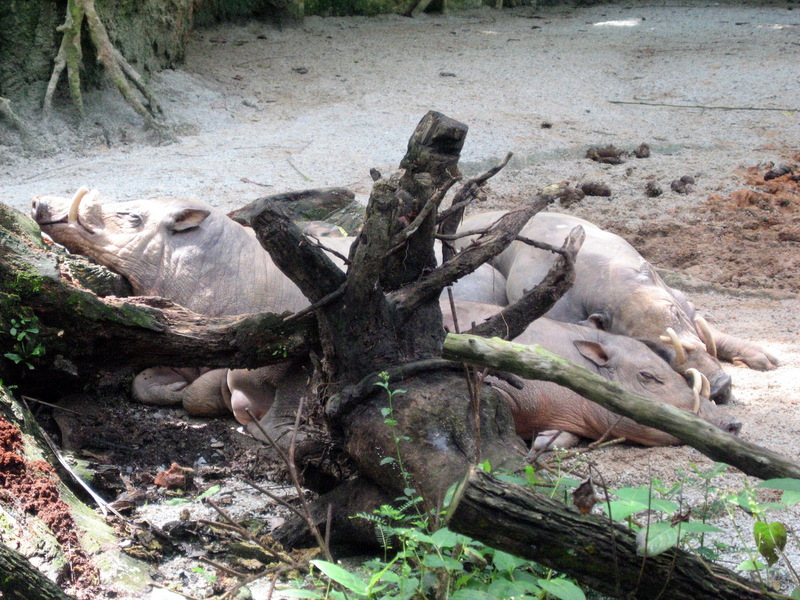Babirusa (Babyrousa babyrussa) - Wiki Babirusa
From Wikipedia, the free encyclopedia
[Photo] Babirusa (Babyrousa babyrussa) at the Singapore Zoo. Taken by Terence Ong (http://commons.wikimedia.org/wiki/User:Terence_Ong) in November 2006.
The Babirusa or pig-deer, Babyrousa babyrussa, is a pig-like animal native to Sulawesi and surrounding islands of Indonesia. It has two pairs of large tusks; enlarged canine teeth that curve back up through the top of the snout. This species is considered endangered.
Classification
The babirusa has usually been classified as a single species in the genus Babyrousa, but recent work suggests that there may be several species, differentiable on the basis of geography, body size, amount of body hair, and the shape of the upper canine tooth of the male. Most experts agree that babirusas are part of the pig family, and are one of the oldest living members of the family, representing a subfamily, Babyrousinae, that branched off from the warthog branch of the pig family (Subfamily Phacochoerini) during the Oligocene or early Miocene.
Habitat
The Babirusa is native to the large eastern Indonesian island of Sulawesi and surrounding islands. Its habitat is the underbrush of tropical forests and canebrakes, and the shores of rivers and lakes. Its mostly-hairless, mottled-grey-and-brown hide provide it with a degree of camouflage. The babirusa is known for its two pairs of tusks; both its upper and its lower pairs of canine teeth are greatly enlarged, and curve up and back towards the head. The upper canines of the male babirusa are so curved and enlarged that they emerge through the flesh, by way of holes, to pass through the top of the snout.
This species is on the endangered list.
Because it is split-hooved and has a three-chambered stomach (and was thus thought to be a ruminant for a long time), there was some dispute in Halakha (Jewish law) as to whether the babirusa pig is, in fact, kosher (permitted according to Jewish dietary laws). Eventually it was found that the animal is not a true ruminant, and thus remains 'trefe' like other pigs.
Captivity
In Captivity, the species is very inbred. There are 2 subspecies kept in zoos. One subspecies in only kept in American zoos while the other is found mainly in European zoos. The Bronx zoo has an excellent breeding record for this animal. There are not many zoos that have bred the animal. Some that have are Los Angeles Zoo, South Lakes Wild Animal Park and Twycross Zoo. It is reported (here) that in 2006 a male babirusa and a female domestic pig accidentally interbred in the Copenhagen (Denmark) Zoo. The offspring were 5 hybrid piglets most resembling the babirusa, both in their teeth and skin colour.
http://en.wikipedia.org/wiki/Babirusa
| The text in this page is based on the copyrighted Wikipedia article shown in above URL. It is used under the GNU Free Documentation License. You may redistribute it, verbatim or modified, providing that you comply with the terms of the GFDL. |
